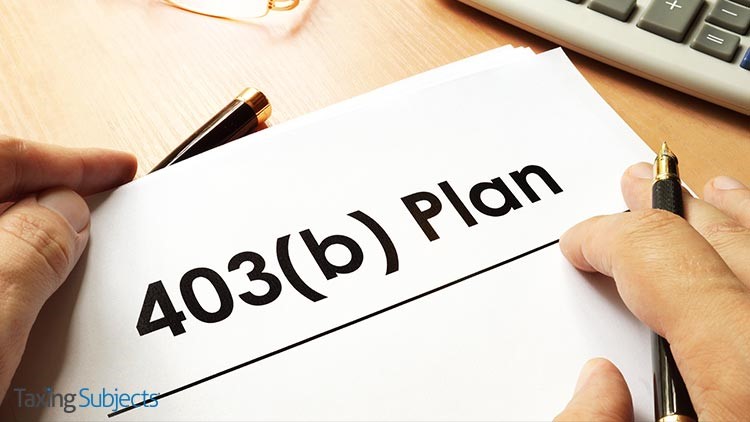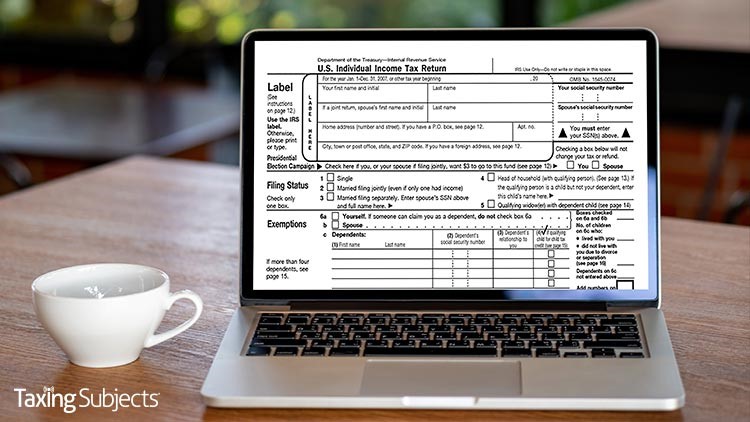by | Nov 12, 2020 | Tax Tips and News
A new notice from the Internal Revenue Service reveals some new rules that are expected to be included in upcoming proposed regulations.
Notice 2020-75 spells out the proposed regulations clarifying that state and local income taxes imposed on and paid by a partnership or S corporation on its income are allowed to be claimed as a deduction by the filing partnership or S corp.
The filing entity, the notice continues, would use the state and local taxes paid to calculate its non-separately stated taxable income or loss for the taxable year of payment. Therefore, the notice concludes, the tax payments are not subject to the limitation for state and local taxes on partners and shareholders who itemize deductions.
“This definition does not include income taxes imposed by U.S. territories or their political subdivisions,” the notice states. “Thus, this definition solely includes income taxes described in section 164(b)(2) for which a deduction by a partnership is not disallowed under section 703(a)(2)(B), and such income taxes for which a deduction by an S corporation is not disallowed under section 1363(b)(2).”
Further, the notice puts the changes in play immediately and details when the new rules can be applied to specified tax payments:
“The proposed regulations described in this notice will apply to Specified Income Tax Payments made on or after November 9, 2020.The proposed regulations will also permit taxpayers described in section 3.02 of this notice to apply the rules described in this notice to Specified Income Tax Payments made in a taxable year of the partnership or S corporation ending after December 31, 2017, and made before November 9, 2020, provided that the Specified Income Tax Payment is made to satisfy the liability for income tax imposed on the partnership or S corporation pursuant to a law enacted prior to November 9, 2020.”
For updates on the implementation of the Tax Cuts and Jobs Act (TCJA), check out the Tax Reform page on IRS.gov.
Source: IR-2020-252
– Story provided by TaxingSubjects.com
by | Nov 11, 2020 | Tax Tips and News
Anyone who doesn’t normally file a tax return but hasn’t already received an Economic Impact Payment (EIP) is urged by the IRS to take advantage of its “National EIP Registration Day.”
While the official day was marked on Nov. 10, those non-filers still without an EIP have until Nov. 21 to register for one. National EIP Registration Day was part of the agency’s concentrated push across the U.S. to make sure every eligible American gets registered before the deadline in order to receive a payment this year.
The special event featured support from within and without the tax community—including those who work with low-income and underserved communities. These groups helped to spread the word about the new Nov. 21 deadline and in some cases, provided special support for people who still need to register for the payments on IRS.gov.
An IRS letter led the way.
Earlier this fall, the IRS sent nearly 9 million letters to people who appear to qualify for an Economic Impact Payment, but don’t nearly file a tax return.
To help tax pros and other partners reach out to non-filers, the IRS posted a zip-code-level breakdown of the number of those letters. The letters urge people to use the Non-Filers: Enter Info Here tool, available only on IRS.gov.
“Our partner groups have been vital to our efforts to reach many underserved communities,” said IRS Commissioner Chuck Rettig. “Already, millions of Americans have successfully used the Non-Filers portal and received their Economic Impact Payment. Registration is quick and easy, and we urge everyone to share this information to reach as many people before time runs out on Nov. 21.”
It was a team effort.
Many partner groups have been working with the IRS on this project. They’ve been helping to translate and and to make Economic Impact Payment information and resources available in 35 languages. The IRS has also been conducting a multilingual push on social media to support the final registration drive.
Since the Non-Filers tool launched in the spring, nearly 8.3 million people who normally aren’t required to file a tax return have registered for the payments. The IRS continues to work to reach others who haven’t used the tool yet, which led to this fall’s mail-out and the Nov. 10 registration event.
The online tool is designed for people with incomes typically below $24,400 for married couples, and $12,200 for singles who could not be claimed as a dependent by someone else. This includes couples and individuals who are experiencing homelessness.
Normally, an eligible individual who registers will get a $1,200 payment if they are single—or $2,400 if they’re married and file a joint return. If they have dependent children, they qualify for an additional $500 for each qualifying child.
Registrants who use the Non-Filers tool can speed up their payment by opting for direct deposit. Those not choosing direct deposit will get their payment by paper check sent through the mail.
Two weeks after they register, applicants can track their payment’s status through the Get My Payment tool on IRS.gov.
For other information on Economic Impact Payments, go online to IRS.gov and visit the Economic Impact Payment Information Center.
Source: IR-2020-253
– Story provided by TaxingSubjects.com
by | Nov 9, 2020 | Tax Tips and News
New guidance has been issued by the Department of the Treasury and the Internal Revenue Service for employers and employees with terminating 403(b) plans. The guidance is aimed specifically at plans that fund benefits through 403(b)(7) custodial accounts.
This new guidance was driven by changes provided in the Setting Every Community Up for Retirement Enhancement Act of 2019—also known as the SECURE Act.
Details are laid out in Revenue Ruling 2020-23. It provides that 403(b) retirement plans funded through individual or group 403(b)(7) custodial accounts can be terminated through the distribution of individual custodial accounts.
If a distributed custodial account continues to comply with certain requirements, then no portion of the distributed custodial account can be included in gross income until amounts are actually paid out of the account to a participant or a beneficiary.
The IRS has also issued Notice 2020-80, which requests comments on the application of annuity and spousal rights provisions that relate to distributions in certain plans described in Revenue Ruling 2020-23.
Source: IR-2020-251
– Story provided by TaxingSubjects.com
by | Nov 6, 2020 | Tax Tips and News
The Security Summit yesterday reported that taxpayers are being targeted by a new series of text-message scams that impersonate state departments of revenue and tax relief organizations. An organization comprised of the Internal Revenue Service, state tax agencies, and private members of the tax industry, the Summit has been raising awareness of identity theft tax refund fraud since 2015.
In an Internal Revenue Service press release, the Security Summit explains that identity thieves are asking taxpayers to provide bank account information finalize transfer of Economic Impact Payment funds. The text messages include a link to a website that is designed to look like the online “Get My Payment” tool, reading: “You have received a direct deposit of $1,200 from COVID-19 TREAS FUND. Further action is required to accept this payment into your account. Continue here to accept this payment.”
How do phishing sites steal my information?
Phishing websites use many different mechanisms to steal victims’ information and money, many of which also appear in phishing emails, social media messages, and text messages:
- Collecting data from information-gathering fields
- Installing malware with embedded links
- Getting visitors to call listed numbers
- Running background scripts that install malware
Since some of these sites can steal information simply by visiting them, recipients of phishing emails should make it a habit to never click on embedded links and attachments in unsolicited digital messages. (Another good practice is to only visit trusted websites by entering the URL into a web browser.)
What should people do if they receive a phishing message?
The Security Summit says that victims should report tax-related phishing attempts to the IRS, since collecting data and raising awareness can help us all avoid falling victim to impersonation scams. Specific to this text-message scam, the Summit recommends sending a screenshot of the message in an email containing the following information to Phishing@IRS.gov:
- Date/Time/Timezone that they received the text message
- The number that appeared on their Caller ID
- The number that received the text message
“The IRS does not send unsolicited texts or emails,” the Summit reminds taxpayers. “The IRS does not call people with threats of jail or lawsuits, nor does it demand tax payments on gift cards.”
Finally, the Summit notes that the remaining non-filers who could be eligible to receive an EIP need to use the “Non-Filers: Enter Payment Info Here” tool before the upcoming Nov. 21, 2020 deadline.
Source: IR-2020-249
– Story provided by TaxingSubjects.com
by | Nov 6, 2020 | Tax Tips and News
The Internal Revenue Service announced that some college students could qualify for an Economic Impact Payment. This press release is part of the agency’s push to get all eligible non-filers to register for an EIP before the Nov. 21, 2020 deadline, and it comes days before National EIP Registration Day.
“In advance of the National EIP Registration Day on November 10 and highlighted in ‘A Closer Look,’ the IRS is reminding people who don’t normally file a tax return they may be able to register for an Economic Impact Payment with a quick visit to the Non-Filers tool on IRS.gov,” the IRS explains. “In particular, the IRS wants to remind self-supporting students with little or no income that they may be eligible for payments of $1,200 or more.”
Why do non-filers need to register to receive an Economic Impact Payment?
The IRS does not have EIP-qualifying information for Americans who do not make enough money to be required to file a tax return. To help these non-filers provide the information needed to receive a $1,200 payment, the agency developed an online EIP-registration tool.
How do self-supporting college students register for an Economic Impact Payment?
The IRS says that the Non-Filers: Enter Payment Info Here online tool is now the only way for qualifying self-supporting college students and other non-filers to register for an EIP before the deadline on Nov. 21, 2020. To get started, visit IRS.gov/Coronavirus/Non-Filers-Enter-Payment-Info-Here.
Do all college students qualify to use the Non-Filers registration tool?
The IRS clarifies that not all college students qualify to use the Non-Filers registration tool. “Students who either need to or want to file a regular return should not use the Non-Filers tool,” the agency writes. “This includes, for example, any student who had federal income tax withheld from their pay and wants to file a return to claim a refund. The IRS reminds students who have summer jobs or part-time positions not to overlook filing a tax return so they can receive a potential federal tax refund.”
Additionally, students who can be claimed as a dependent do not qualify for an Economic Impact Payment.
Watch out for coronavirus and EIP text message scams!
As the IRS makes a final push to help eligible non-filers get an EIP ahead of the deadline, identity thieves are also paying close attention. The agency and its Security Summit partners this week warned about a new text message-based phishing scam.
The phishing text messages impersonate state tax agencies and tax relief organizations, and they often contain a link to a phishing website that is designed to steal your bank account information. To learn more about the latest phishing scam, check out “Security Summit Warning: Taxpayers Receiving EIP Text Message Scam” on Taxing Subjects.
Source: IR-2020-250
– Story provided by TaxingSubjects.com
by | Nov 4, 2020 | Tax Tips and News
The Internal Revenue Service has unveiled changes they say will help struggling taxpayers affected by the pandemic settle their IRS tax debts more easily.
The agency says it took a hard look at its collection activities to see how it could offer some relief to taxpayers who owe tax due but are struggling financially because of the pandemic. The goal, IRS says, was to expand taxpayer options for making payments while offering alternatives to resolve the balances owed.
“The IRS understands that many taxpayers face challenges, and we’re working hard to help people facing issues paying their tax bills,” said IRS Commissioner Chuck Rettig. “Following up on our People First Initiative earlier this year, this next phase of our efforts will help with further taxpayer relief efforts.”
“We want people to know our IRS employees are committed to continue helping taxpayers wherever possible, including offering many options for those struggling to pay their tax bills,” said Darren Guillot, the IRS Small Business/Self-Employed Deputy Commissioner for Collection and Operations Support. Guillot discussed the new relief options in a new edition of IRS “A Closer Look.”
To be sure, taxpayers who owed tax due have long had options through payment plans and other IRS tools; the new Taxpayer Relief Initiative expands on those tools even more.
The revised COVID-related collection procedures will be helpful to taxpayers, especially those who have a record of filing their returns and paying their taxes on time.
Among the highlights of the Taxpayer Relief Initiative:
- Taxpayers who qualify for a short-term payment plan option may now have up to 180 days to resolve their tax liabilities instead of 120 days.
- The IRS is offering flexibility for some taxpayers who are temporarily unable to meet the payment terms of an accepted Offer in Compromise.
- The IRS will automatically add certain new tax balances to existing Installment Agreements, for individual and out of business taxpayers. This taxpayer-friendly approach will occur instead of defaulting the agreement, which can complicate matters for those trying to pay their taxes.
- To reduce burden, certain qualified individual taxpayers who owe less than $250,000 may set up Installment Agreements without providing a financial statement or substantiation if their monthly payment proposal is sufficient.
- Some individual taxpayers who only owe for the 2019 tax year and who owe less than $250,000 may qualify to set up an Installment Agreement without a notice of federal tax lien filed by the IRS.
Additionally, qualified taxpayers with existing Direct Debit Installment Agreements may now be able to use the Online Payment Agreement system to propose lower monthly payment amounts and change their payment due dates.
The IRS has more details on the Taxpayer Relief Initiative.
The IRS offers options for short-term and long-term payment plans—including Installment agreements—through the Online Payment Agreement (OPA) system.
In general, this service is available to individual taxpayers who owe $50,000 or less in combined income tax, penalties and interest or businesses that owe $25,000 or less combined that have filed all tax returns. The short-term payment plans are now able to be extended from 120 to 180 days for certain taxpayers.
Installment Agreement options are available to those who cannot fully pay their balance now, but can pay their balance over time. The Installment Agreement options were expanded to remove the requirement for financial statements and substantiation in more circumstances for balances owed up to $250,000 if the monthly payment proposal is sufficient.
The IRS also modified Installment Agreement procedures to further limit the requirements for Federal Tax Lien determinations for some taxpayers who only owe taxes for tax year 2019.
In addition to payment plans and Installment Agreements, the IRS also offers other tools to assist taxpayers who owe taxes:
Temporarily Delaying Collection — Taxpayers can contact the IRS to request a temporary delay of the collection process. If the IRS determines a taxpayer is unable to pay, it may delay collection until the taxpayer’s financial condition improves.
Offer in Compromise — Certain taxpayers qualify to settle their tax bill for less than the amount they owe by submitting an Offer in Compromise. To help determine eligibility, use the Offer in Compromise Pre-Qualifier tool. Now, the IRS is offering additional flexibility for some taxpayers who are temporarily unable to meet the payment terms of an accepted offer in compromise.
Relief from Penalties — The IRS is highlighting reasonable cause assistance available for taxpayers with failure to file, pay and deposit penalties. First-time penalty abatement relief is also available for the first time a taxpayer is subject to one or more of these tax penalties.
All taxpayers can access important information on IRS.gov. Many taxpayers requesting payment plans, including Installment Agreements, can apply through IRS.gov without ever having to talk to a representative.
Requests for relief—including the options in this new initiative—can be made by contacting the phone number on the taxpayer’s IRS notice. Taxpayers can also make the request in writing. But the IRS stresses that if taxpayers get a notice of a balance due, the one thing they should not do is nothing.
“If you’re having a tax issue, don’t go silent. Please don’t ignore the notice arriving in your mailbox,” Guillot said. “These problems don’t get better with time. We understand tax issues and know that dealing with the IRS can be intimidating, but our employees really are here to help.”
Throughout the pandemic, the IRS has adjusted its operations to help ensure the health and safety of employees and taxpayers alike. The adjustments have extended to the relief contained in its People First Initiative.
More information and background on collection relief and procedures can be found in “A Closer Look.”
“While it’s been important for us and the nation to resume our critical tax compliance responsibilities, we continue to assess the wide-ranging impacts of COVID-19 and other difficulties people are experiencing,” Guillot said.
Source: IR-2020-248
– Story provided by TaxingSubjects.com






